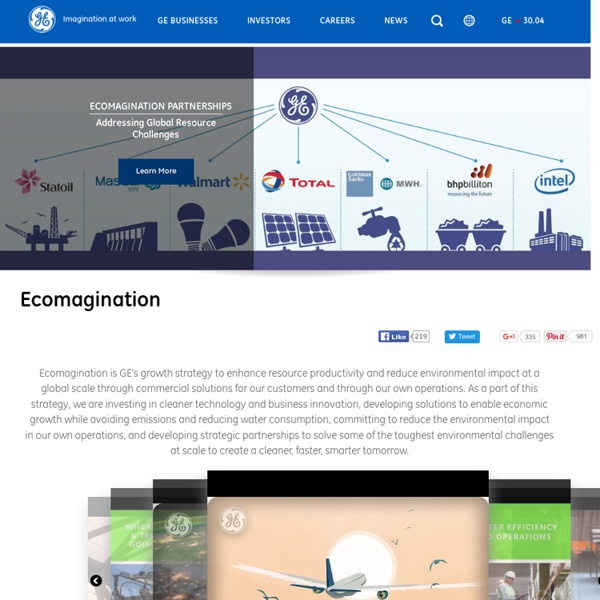



The World’s Biggest Companies on Why They Buy Renewables: ‘It’s a Very Clear Economic Issue’ | Greentech Media Many companies, both large and small, continue to struggle with the economics and complexity of procuring clean energy. The Rocky Mountain Institute estimates that for every successful renewable energy deal there are five to 10 failed attempts or significant delays, which impedes overall market growth. Reflecting these challenges, the commercial solar market experienced its first down year in recent history last year. Several companies leading the charge for clean-energy adoption presented on their lessons learned this week at Verge to help other businesses meet their renewable energy purchasing goals. Use what you already have For General Motors, renewable energy procurement turned out to be a natural extension of the company’s core competencies, said Rob Threlkeld, GM’s manager of renewable energy. “The biggest thing I highlight [to other companies] is to leverage the internal resources they already have available,” said Threlkeld. Game-changing PPAs Always efficiency first
Download Opera Energy Efficiency - State of Green Saving energy in buildings Buildings account for 40 per cent of the global energy consumption and nearly the same share of CO2 emissions.Consequently, reducing the energy consumption of buildings will be a key priority for any country or community striving to save money and reduce CO2 emissions. With today’s existing technologies, it is possible to reduce energy consumption in buildings by at least 50 per cent, and possibly as much as 80 per cent. These huge savings can be made quite easily with simple measures such as energy-efficient windows, insulation materials, heat regulators, ventilation systems and lighting,just to mention a few. Denmark has been a world leader in energy efficiency in buildings for decades and energy-efficient solutions are widely implemented in newly built and refurbished housing, offices and public institutions all over the country. Join the Future.
השמש לא מחייכת למשקיעים במניות האנרגיה הסולארית - MarketMoney בעולם הכלכלי המודרני אנשים מחפשים דרכים יצירתיות לייצר לעצמם הכנסות מנכסים שהם מחזיקים. יש מי שמשכירים את הדירות שלהם כשהם נוסעים לחופשה. אחרים חולקים כלי רכב בנסיעות ארוכות. חדש! עקבו אחר המדדים המובילים ונהלו תיק השקעות ב-TheMarker Finance בשנים האחרונות התפתח, בעידודן של מדינות ועיריות תחום פעילות חדש - השכרת גגות לחברות אנרגיה להתקנת פאנלים סולאריים לייצור חשמל. התחום הסולארי מתפתח בשנים האחרונות. לכאורה, נראה שהסביבה הכלכלית תומכת בחברות האנרגיה הסולארית. כך למשל, סולאר־סיטי, שבעל המניות העיקרי בה (25%) הוא אילון מאסק, המייסד של חברת המכוניות טסלה, איבדה 57% משוויה בתוך חמישה חודשים. ענף האנרגיה העולמי תלוי ברובו במקורות אנרגיה מסורתיים - בעיקר נפט וגז טבעי. כדי להפיק חשמל מהשמש נדרשים שטח גדול ותשתית יקרה. אבל בשנים האחרונות חלים שינויים שמוזילים אט־אט את העלות. נתונים של בנק ההשקעות אופנהיימר מראים כי עלויות ההתקנה ירדו בשנים האחרונות מרמה של 7 דולר לוואט עבור התקנה ביתית ו–5 דולר לוואט בהתקנה מסחרית ב–2010 - לרמות של 2.75 דולר ו–2 דולר לוואט בהתאמה. הגז תחרותי יותר
FILIPPA SMEDHAGEN SUND - MAKEUP ARTIST COMMERCIAL WHYRED AW08 (1) filippasmedhagensund.com Buy this domain The owner of filippasmedhagensund.com is offering it for sale for an asking price of 999 USD! This page provided to the domain owner free by Sedo's Domain Parking. Disclaimer: Domain owner and Sedo maintain no relationship with third party advertisers. NAESCO: National Association of Energy Service Companies America’s First All-Renewable-Energy City To understand what makes Burlington unlike almost any other city in America when it comes to the power it consumes, it helps to look inside the train that rolls into town every day. The 24 freight cars that pull up to the city’s power plant aren’t packed with Appalachian coal or Canadian fuel oil but wood. Each day 1,800 tons of pine and timber slash, sustainably harvested within a 60-mile radius and ground into wood chips, is fed into the roaring furnaces of the McNeil Generating Station, pumping out nearly half of the city’s electricity needs. Much of the rest of what Burlington’s 42,000 citizens need to keep the lights on comes from a combination of hydroelectric power drawn from a plant it built a half mile up Vermont's Winooski River, four wind turbines on nearby Georgia Mountain and a massive array of solar panels at the airport. The environmental sustainability revolution has spread to other sectors of civic life. Story Continued Below Tidy it is, and also financially effective.
MacWindows The Economics of Renewable Energy: Falling Costs and Rising Employment | Adnan Z. Amin The general public perception of renewable energy is often in terms of saving the environment and reducing global carbon dioxide emissions. While it is true that renewable energy provides great environmental benefits and may yet prove to be our main hope for decarbonization, it is just as true and often overlooked that renewable energy provides considerable economic and social benefits. Take jobs for example. While the bulk of employment is found in a relatively small number of countries, more and more countries are deploying renewable energy and creating jobs. Solar PV is the largest renewable energy employer with 2.5 million jobs worldwide, up from 2.3 million at last count. Wind is another example where falling costs are creating new jobs. The new reality is that the cost of generating power from renewable energy sources has reached parity or dropped below the cost of fossil fuels for many technologies in many parts of the world. The economics of renewable energy are now undeniable.
yakov
this is great material by ofer2 Mar 18